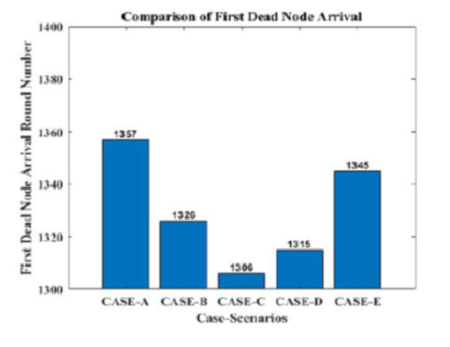


Indian Journal of Science and Technology
Year: 2021, Volume: 14, Issue: 42, Pages: 3177-3189
Original Article
N J Harish1*, H S Manjunatha Reddy2
1Assistant Professor, Department of Electronics and Communication Engineering, Visvesvaraya Technological University, Belagavi, Global Academy of Technology, Bengaluru, Karnataka, India
2Professor and Head, Department of ECE, Visvesvaraya Technological University, Belagavi, Global Academy of Technology, Bengaluru, Karnataka, India
*Corresponding Author
Email: [email protected]
Received Date:30 April 2021, Accepted Date:26 November 2021, Published Date:10 December 2021
Objectives: To design an Optimized and Energy Efficient Routing Scheme (OEERS) for heterogeneous wireless sensor networks. Methods: In OEERS algorithm the cluster head selection is done with the probability values based on available energy levels along with optimal cluster counts and node distance from base station. Hence, nodes with higher energy and located near to base station have higher probability to be selected as cluster head (CH). Findings: In this work, analysis for OEERS has been executed to prove the robust network performance for the designed sensor network in a multi-level heterogeneous environment in terms of key network parameters such as Arrival of Dead Nodes in various stages, Number of Packets Transmitted to Base Station, Number of Dead Nodes during Each Round, Residual Energy during Each Round, Dissipated Energy during Each Round, etc. Besides this, comparative analysis has also been performed to showcase the out performance of the OEERS technique over the DL-LEACH scheme.
Keywords: Cluster Head; Alive node; Advance and master nodes; Network Lifetime; Heterogeneous Wireless Sensor Network
© 2021 Harish & Reddy. This is an open-access article distributed under the terms of the Creative Commons Attribution License, which permits unrestricted use, distribution, and reproduction in any medium, provided the original author and source are credited. Published By Indian Society for Education and Environment (iSee)
Subscribe now for latest articles and news.